
OK, you knuckleheads …. a look at the zany trio (with the personnel changes noted) after the jump ….
I doubt that I would have attempted this diary had I not received a copy of the autobiography of Moe Howard some years back. Just as with reading the Richard Bann/Leonard Maltin book on the Little Rascals – this book put a timeline on a TV series from my mis-spent youth, explaining the personnel changes, how their career unfolded and the like. And yes, you can add all of the catch-phrases in your comments 🙂
The story begins with the five Horwitz brothers of Brooklyn, New York just before the turn of the 20th Century. In addition to brothers Irving and Jack (who did not enter show business) there were Samuel (known as “Shemp”, born 1895), Moses (known as “Moe”, born 1897) and the youngest brother Jerome (known as “Curly”, born 1903). Those three all adopted the stage name of Howard.
At age 12, Moe met a slightly older boy: the Texas-born Charles Nash, who later adopted the stage name Ted Healy – who later became a noted vaudeville performer, comedian, and film actor. Moe and he developed a friendship that later helped launch the careers of the Three Stooges – for now, they found work as extras in stage productions while still in school. At age 17, Moe saw an ad in Billboard for work as an actor for the showboat theater run by Captain Billy Bryant in Mississippi and got the job by using a false photograph … but with his regular theater experience, he proved himself as an actor.
Moe later returned to New York and was able to land roles in vaudeville shows with Shemp, when in 1922 they ran into Ted Healy, who had now become a vaudeville star. Moe and Shemp joined as his stooges – normally the butt of the star’s jokes and antics – but Moe and Shemp often were seen pulling down Healy’s pants, so the act had some novelty.
In 1925, they watched a stage show in Chicago, where they saw a curly-haired man playing the violin while doing a Russian dance. Moe and Ted Healy agreed they needed to speak to this man (Larry Fineberg from Philadelphia) whose stage name became Larry Fine. Their actual offer was $90/week to join the act (with an additional $10/week if he would get rid of the violin). They worked on-and-off for five years before Moe’s marriage and new daughter caused him to leave theater in 1927. After having no luck as a businessman, he rejoined the act a year later.
In 1930, Healy and the Stooges were offered film work in Hollywood (at the dawn of the talking picture era) and had some success, both working together and apart (Healy as a leading man and the Stooges as part of other ensemble films). Then in 1932, Shemp grew tired of Healy – who had a severe drinking problem and had not raised the Stooges’ sideman pay in some time – and he went off on his own as an actor, later appearing as Knobby Walsh in the Joe Palooka short-film series.
As a replacement for Shemp, Moe suggested his young brother Jerome, who visually did not fit-in at first … until he cut his hair and suggested Curly as his stage name. They clicked well, and continued with Healy in this on-again, off-again manner until 1934, when the Stooges decided to strike out on their own.
Ted Healy was cited as an influence by many entertainers (including Milton Berle, Bob Hope, and Red Skelton) but his drinking and temper caught up with him, as he was found dead in 1937 after a fight at a Hollywood nightclub, at the age of 41.
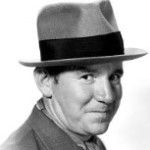
The Stooges received an offer from Columbia for pilot films, with Punch Drunks being the one which eventually led to a contract to do short films (which are the TV episodes later generations came to know). They produced these shorts for Columbia for twenty-four years until 1958, which were shown in many places around the world.
Moe did relate that Columbia studio head Harry Cohn always low-balled them during renewal negotiations, saying it was “getting really tough to sell two-reel comedies”. This was true by the mid-50’s, but Moe found out later that during the 30’s and 40’s it was actually the Stooges shorts theater owners wanted: forced to take a “B” picture from Columbia if they wanted a Stooges short. While upset, Moe allowed that the Stooges did receive a decent wage (especially during the Depression years) and along with off-season vaudeville work: he could not truly complain, in the end.
While Moe and Larry appeared continuously in the act during its headlining history (1934-1970), first here are the dates during which the act’s 3rd member participated in (which leads to much confusion).
Curly Howard (1934-1946)
Shemp Howard (1946 -1955)
Joe Besser (1955-1958) – ending the “shorts” era (that one saw on TV)
——————————————————————————-
Curly Joe DeRita (1958-1970) – appearing only in feature films (not the TV shorts)
Two films of note during the first era of the Stooges: one from their debut year of 1934 was Men in Black (obviously not with Will Smith and Tommy Lee Jones) where they are doctors in a hospital being paged continuously: “Calling Doctor Howard, Doctor Fine, Doctor Howard!” – which was sampled in the 1982 film Young Doctors in Love (according to my brother). It was the only Stooges work ever to be nominated for an Academy Award (for Best Short Subject: Comedy).

The other was the 1940 short You Nazty Spy – the first Hollywood film to parody Adolf Hitler (following the outbreak of WW-II in Europe), released nine months before the Charlie Chaplin film The Great Dictator – a definite risk, at a time when isolationism in the USA was strong. It was followed-up by I’ll Never Heil Again in 1941.
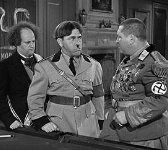
Two of the characters who often appeared in Stooges shorts ought to be mentioned. One was Vernon Dent – who appeared in more Stooges shorts than any other actor (most often portraying the villain) – and also appeared (as a character actor) in films with nearly every other star Columbia Pictures had on its roster. Vernon Dent developed a severe case of diabetes later in life (going blind by the time of Shemp’s 1955 funeral) and he died in 1963 at the age of 68.
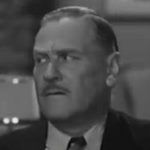
The other actor was a sympathetic figure named Emil Sitka – who often played the zany professor or other oddball foils for the Stooges – and was the only character to appear with all six men who were at one time or another in the Stooges (having been born in 1914, he outlived nearly everyone associated with the Stooges).
He was best-known for his role in the 1947 short Brideless Groom for two reasons. One was the fact that under the old copyright laws, works could be copyrighted for twenty-eight years, then renewed for an additional twenty-eight. But Brideless Groom was one of four Stooges shorts that (inexplicably) were not renewed – and thus could be shown free on TV (without any royalties) after 1975 (and also released on compilation videos) as part of the public domain. It may be the most-watched Stooges short of all time.
The other reason was Emil Sitka’s character: in a farce where Shemp has a deadline to marry (in order to win an inheritance) … Sitka is the harried Justice of the Peace, trying to marry Shemp with the oft-repeated phrase, “Hold hands, you lovebirds!” – while a riot has broken out between several suitors looking to get in on the action – until in the last scene, Shemp is married to his bride of choice (well, so to speak) just before the deadline.
Sitka participated in many Three Stooges conventions over the course of his life, and many Stooges fans paid him to help officiate at their own marriages … just to hear him utter “Hold hands, you lovebirds!” if you can believe that. Emil Sitka died in January, 1998 at the age of 83.
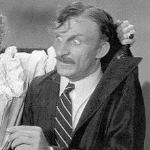
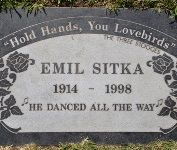
The first major personnel change occurred in 1946, when Curly suffered a debilitating stroke – and he died in 1952 at the age of only 49. (As the photos that follow indicate, the Stooges often looked different off-camera than what you recall them looking like).

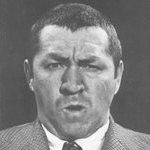
After Curly’s stroke, Shemp assumed his supporting role for the first time since vaudeville. There is one short – 1947’s Hold That Lion – in which Curly was able to make a cameo: the only such film in which all three Howard brothers appeared in. Shemp continued as the third partner until November, 1955 when he died of a sudden heart attack at the age of 60.
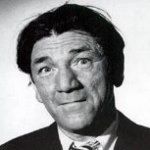
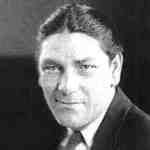
At this point, Moe wanted to enlist the help of comic Joe DeRita – but who was under contract to impresario Harold Minsky, who would not let DeRita out of it. Thus, Moe turned to one of the sidemen on the Milton Berle Show named Joe Besser – who became the third Stooge for the remaining three years on their Columbia shorts contract (1955-1958).
Besser, though, declined to continue with the troupe afterwards (as his wife was ailing). He also made a name for himself as Stinky Davis – the spoiled, impish, bratty overgrown man-child in The Abbott and Costello Show – and Joe Besser died in 1980 at the age of 88.
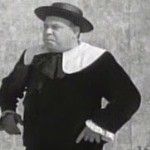
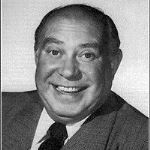
Meanwhile, the contract that Joe DeRita had with Harold Minsky ended at the same time as the Stooges’ short-film career and after joining: the Stooges tried to continue as a nightclub act.
Moe Howard wrote in his autobiography that the Stooges were an abject failure as a nightclub act, with many upset club owners. They even trying to add some off-color jokes …. that flopped even worse. The Stooges were meant for the vaudeville stage, he wrote …. but vaudeville had died long, long ago ….. and their future was quite uncertain.
And then fate intervened: as Columbia re-packaged many of their shorts and sold them to television stations …. yet now intended for children’s programming (not as double features for mainstream film-goers, as they were in the past).
And yes, the issue of the Stooges’ violent acts on-screen became an issue – I can’t fault anyone who cites that as a problem. Ultimately, though, many people saw the finger-poking as only part of the act (along with pie throwing and other slapstick humorous acts) and like the Warner Brothers cartoons: Wile E Coyote was back in the next scene, and Curly never wore any bandages. (Plus, my folks never complained about us kids watching them).
The release on TV reinvigorated the Stooges careers, and they were suddenly in high demand for theater performances aimed at kids (of all ages) … which also led to the troupe appearing in several feature films – which they were unable to do during their Columbia shorts contract.
Thus, Curly Joe DeRita is seen only during the Stooges’ subsequent feature films, such as Snow White and the Three Stooges, plus Three Stooges Meet Hercules and in a cameo on It’s a Mad, Mad, Mad, Mad World (as firefighters). They also made several appearances on the Ed Sullivan Show and other feature films throughout the 1960’s, with a 1965 animated cartoon series having some success.

In 1971, Moe Howard’s son-in-law director began filming the Stooges in a TV pilot project called Kook’s Tour – which was never completed, as Larry Fine suffered a severe stroke. He never recovered, and Larry Fine died in early 1975 at the age of 72.
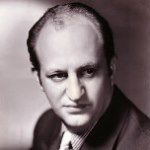
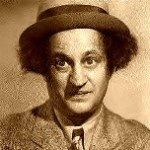
The act came to an end at the time of Larry’s stroke, and Moe Howard began to make personal appearances (often asked by audience members to throw a pie at them) and made several appearances on the Mike Douglas Show – some of which at this link you can see (with Moe now white-haired).
He began writing this book, which had to be completed by his daughter after Moe Howard died in May 1975, one month shy of his seventy-eighth birthday.
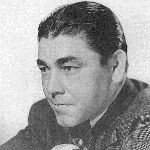
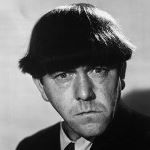
Curly Joe DeRita died in 1993 at age 83: the last of the six men who were official Stooges.

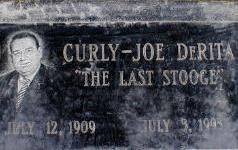
Although it has been nearly 45 years since the last work from the Stooges – there is no shortage of events such as film festivals, TV marathons, licensing agreements, conventions (with one that took place in St. Louis this year, and – hold on to your hats – a Stooges museum in Philadelphia (Larry’s hometown).
There is only one proper way to end this diary: with the 1980’s video Curly Shuffle, soitenly! The Chicagoland Jump ‘N the Saddle Band never had another hit … but this tune was a standard offering at Shea Stadium during 1980’s NY Mets games and – for those of a certain (ahem) age – it still resonates.
1 comment